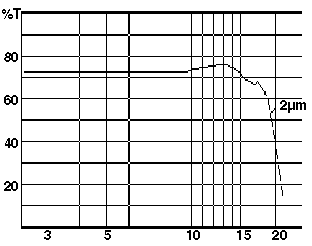Zinc Selenide (ZnSe)
|
Zinc Selenide is used for optical windows, lenses, mirrors and prisms particularly for infrared applications. The transmission range is 0.5μm - 22μm. Used for high power CO2-laser optics at 10.6micronsZinc Selenide is produced by synthesis from zinc vapour and H2Se gas, forming as sheets on graphite susceptors. It is microcrystalline in structure, the grain size being controlled to produce maximum strength. Single crystal ZnSe is available, but is not common but has been reported as having lower absorption and thus more effective for CO2optics. |
||||||||||||||||||||||||||||||||||||||||
|
||||||||||||||||||||||||||||||||||||||||

